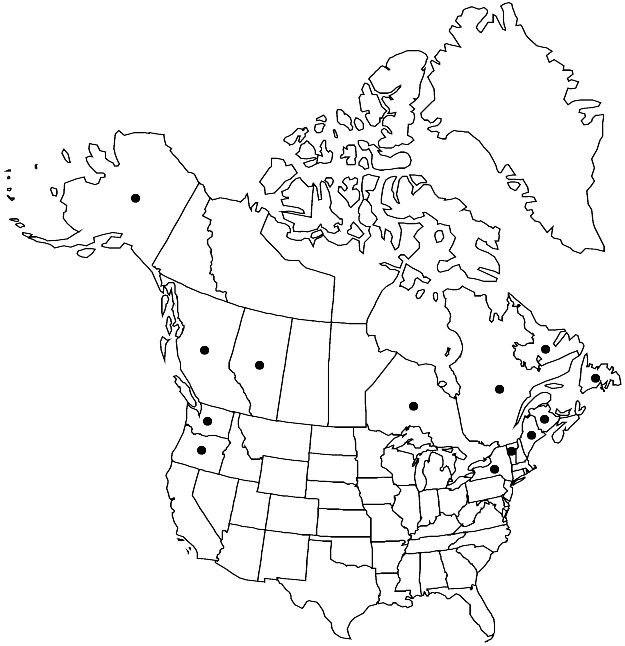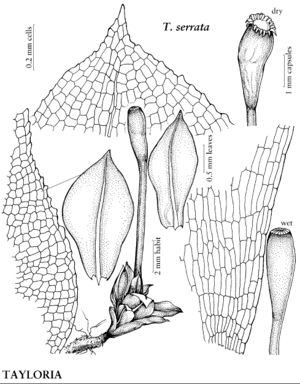Tayloria serrata
Bryol. Europ. 3: 204. 1844.
Plants 0.5–3 cm, in loose tufts, clear green. Stems infrequently branched. Leaves loosely arranged, somewhat contorted when dry, obovate to oblong-obovate, 2–5 × 1–1.5 mm; margins usually recurved proximally, plane distally, often reflexed at apex, entire proximally, toothed distally; apex acuminate, acute, or sometimes obtuse; costa ending before apex. Specialized asexual reproduction by brood bodies sometimes produced on radicles. Sexual condition autoicous or sometimes apparently dioicous. Seta yellow to dark red or brown, 1–3 cm, flexuose, ± stout. Capsule cylindric or oblong-cylindric, 2.5–5 mm including hypophysis; hypophysis somewhat darker than urn, 1–2 times urn length; columella somewhat exserted; operculum deciduous, hemispheric, apex sometimes bluntly apiculate or short-rostrate; peristome inserted below mouth; exostome teeth 16, not split, reflexed when dry, dark red or redbrown, lanceolate. Spores 9–12 µm, smooth.
Phenology: Capsules mature summer.
Habitat: Organic material of animal origin, humus
Elevation: low to moderate elevations
Distribution

Alta., B.C., N.B., Nfld. and Labr., Ont., Que., Alaska, Maine, N.Y., Oreg., Vt., Wash., n, c Europe
Discussion
Tayloria serrata is distinguished by several leaf characters, including obovate to oblong-obovate leaves with an acuminate or acute apex and unbordered, serrate margins. In addition, the exostome teeth of T. serrata are not divided or recurved as in T. acuminata and T. splachnoides. The brood bodies are dark red-brown, narrowly ellipsoid, and small. The capsule is brown or red-brown and gradually narrowed to the hypophysis.
Selected References
None.
